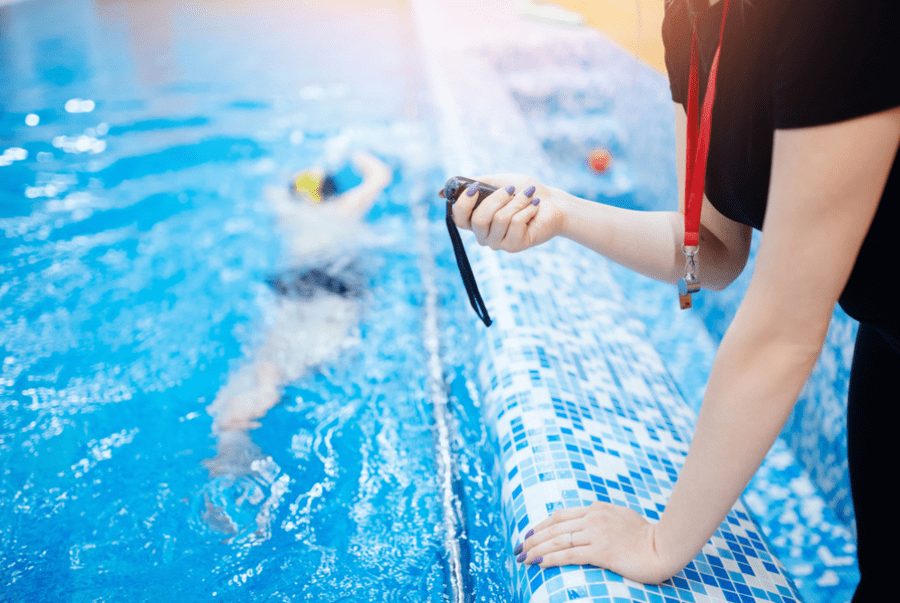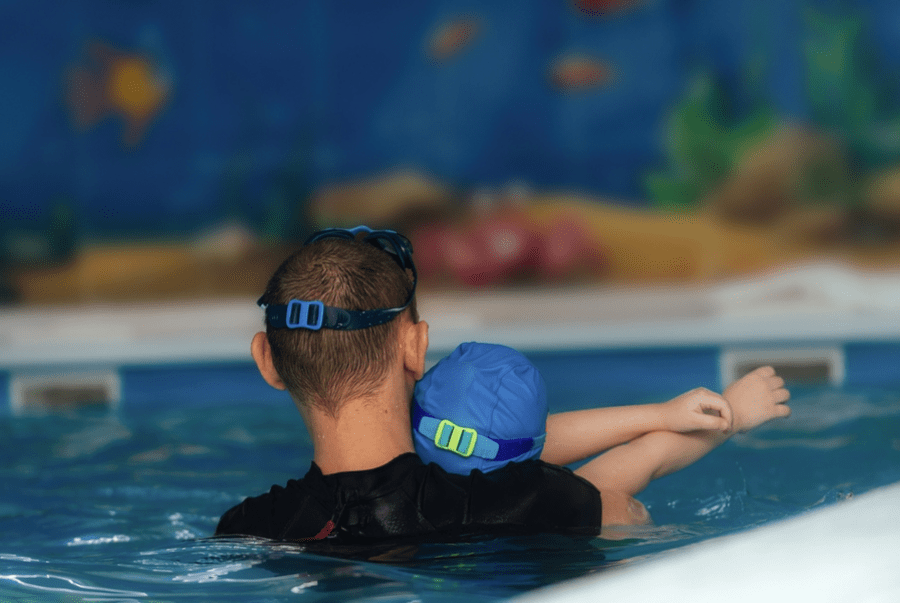Are you considering enrolling your child in swimming lessons but don't know what to look out for? When considering which swim classes your children should take, one of the most important aspects is the teacher-student ratio - this can make or break their experience! This post will cover what you need to know about teacher-student ratios in swimming classes and why they matter. Read on for some insightful info to help cast the best vote for your little ones' aquatic future!
Is there an ideal teacher-to-student ratio in swimming classes?
A good teacher-to-student ratio for a swimming class depends on the swimmers' age and ability level.
For beginner and intermediate-level classes, it's best to have a teacher-to-student ratio of 1:5 or less - this allows the teacher to help and guide each student effectively.
For advanced or competitive swimmers, a maximum of 6 students is recommended, as they can swim independently with minimal teacher supervision.
For infant or baby swimming lessons with adult participation, a higher teacher-student ratio of 1:8 may be allowed as adults can help the teacher manage the class better.
What are some of the benefits of having a small class size?
Small class sizes can make all the difference in ensuring your child's safety in and out of the water. Here are some of the benefits.
More personalised instruction
The most obvious benefit of having a smaller class size is that swimmers receive more personalised instruction from their coach. With larger groups, it can be difficult for instructors to give each student individual attention. Still, with fewer people in the group, coaches can focus on every student and work one-on-one with them on stroke techniques or other areas where they may need help. This individualised instruction helps swimmers progress quickly and build confidence in the water.
Better supervision
Having more teachers in the pool helps ensure that any safety concerns are addressed quickly and efficiently. Small teacher-to-student ratios make it easier for coaches to monitor every swimmer and intervene if necessary, helping keep everyone safe and sound in the water. It also eliminates any embarrassment some children may feel if they face difficulty in front of the class.

Faster skill development
Smaller groups facilitate faster development because they tend to be less chaotic than larger ones. This makes it easier for swimmers to stay focused and engaged while learning new skills. Having fewer students in a group also means that skills can be developed faster because there is less time spent waiting for everyone else to catch up or complete specific tasks. This allows students to move through stretches of material quicker than they would if 20 or 30 other students were competing for the coach's attention.
Fewer distractions
Small teacher-to-student ratios also mean there are fewer distractions in the water. This helps swimmers stay focused on their technique and improve faster, ultimately leading to better pool results.
Increased comfort and confidence in the water
Learning to swim can be intimidating for some people, especially those who have never been in the water. A smaller class size helps create an environment where swimmers feel more comfortable with their instructor and classmates, leading to increased confidence in the pool. This is especially helpful when teaching children who may not have developed strong social skills. Being around other kids their age allows them to become familiar with each other, ultimately leading to improved comfort levels when learning to swim.
Personalised feedback
A teacher-to-student ratio gives swimmers more opportunities to receive personalised feedback from their coach. Instructors can observe each swimmer closely and provide timely corrections that help swimmers progress quickly. This also helps build trust between the coach and the swimmer, which can help improve performance.
More time for socialisation
A small teacher-to-student ratio in swimming classes gives swimmers more time to socialise with their peers. This helps create an atmosphere of fun and camaraderie, encouraging students to stick with the activity. It also allows them to form strong relationships with other swimmers that can last beyond the pool.

Small teacher-to-student ratio at Fulton Swim School
At Fulton Swim School, our teacher-to-student ratio combines safety, personalised instruction, and comfort in the water.
Baby swimming lessons
Our Jellyfish (3-5 months) and Nemos (6-14 months) classes have a higher ratio of 1:8. These lessons require adult participation, which means you'll be in the pool with your little one, providing them with extra security and support. This bond between you and the baby creates a familiar environment for the baby to learn, reducing stress and making it easier for them to enjoy learning in the pool.
Toddlers swimming lessons
Our Wiggles class (14 - 36 months) also requires adult participation with a teacher-to-student ratio of 1:8. This makes it easier for toddlers to transition from adult-assisted swimming to independent swimming. Our Sprats level is by a move-up only, so we don't book children into this level. However, when they're ready and have met all of the Wiggles goals, we will move them up.
Preschool-age swimming lessons
Our Rugrats classes are perfect for complete beginners or nervous children with a teacher-to-student ratio of 1:4. This teacher-to-student ratio allows more one-on-one time with the teacher so your child can progress faster. Children with some swimming experience can join our Explorers class with the same teacher-to-student ratio as Rugrats. Even more advanced students can join our Crabs classes with a teacher-to-student ratio of 1:5. Slightly higher, but since they are more independent, they can still benefit from the teacher's focus and attention.
If you’d like to complete an online assessment to see which level is right for your child you can do so on our website. So if you're looking for a teacher-to-student ratio perfect for your little one, look no further than Fulton Swim School. Sign up today and give your child the opportunity to learn how to swim in a safe and fun environment. See you at the pool!
